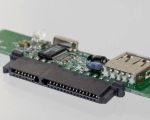How Long Does It Take to Repair a Computer Motherboard? Key Factors & Repair Time Guide
- 1-Understanding Motherboard Repair
- 2-Common Reasons for Motherboard Repair
- 3-Factors Affecting Repair Time
- 4-Steps Involved in Motherboard Repair
- 5-How to Speed Up Motherboard Repair
- 6-Why Expert Repair Is Worth It
- 7-How to Choose a Reliable Repair Service
1. Understanding Motherboard Repair
The motherboard is the heart of your computer, connecting all the key components. When it suffers from an issue, it can cause a range of problems, from complete system failure to minor glitches. Repairing a motherboard requires technical skill and patience, and the time it takes can vary based on several factors. In this article, we'll explore how long it typically takes to repair a motherboard and what factors influence that timeline.
2. Common Reasons for Motherboard Repair
Motherboard issues can stem from a variety of causes, including physical damage, electrical surges, faulty components, or even overheating. Common problems include damaged capacitors, burned-out chips, or broken traces on the board. Identifying the issue quickly can help repair technicians estimate the repair time more accurately.
3. Factors Affecting Repair Time
Several factors influence how long it will take to repair a computer motherboard. These include:
- Severity of the Damage: Minor issues like a simple capacitor replacement may take just a few hours, while extensive damage could require several days of work.
- Availability of Parts: If a specific component needs to be replaced, the availability of the part can greatly affect repair time. Older or less common parts might take longer to source.
- Technician Expertise: A highly skilled technician may be able to identify and repair issues more efficiently than someone with less experience.
- Workload of the Repair Service: If the repair service is busy with other projects, it may take longer to get to your motherboard repair.
4. Steps Involved in Motherboard Repair
The repair process generally follows these steps:
- Diagnosis: The technician will first test your motherboard to identify the specific issue.
- Assessment: After diagnosis, the technician will assess the damage and inform you about the repair options and expected timeline.
- Repair Work: This involves replacing or fixing damaged components, soldering, or reworking the motherboard circuitry.
- Testing: After repair, the technician will thoroughly test the motherboard to ensure everything is functioning correctly.
5. How to Speed Up Motherboard Repair
If you're in a rush, there are a few things you can do to speed up the process:
- Choose a Repair Service with Fast Turnaround Times: Research services known for their efficiency and quick turnaround.
- Ensure Quick Part Availability: If you know a specific part is required, check ahead to ensure it is in stock.
- Provide Detailed Information: The more information you can give the technician upfront, the quicker they can diagnose the issue.
6. Why Expert Repair Is Worth It
While DIY repairs may seem tempting, expert repair services are often worth the investment. Professional technicians have the right tools and expertise to handle delicate components and ensure a high-quality repair. Opting for an expert service also minimizes the risk of further damage and can help save time in the long run.
7. How to Choose a Reliable Repair Service
When choosing a repair service, consider factors such as:
- Experience: Look for technicians with experience in repairing motherboards, particularly for your type of computer.
- Reviews: Read reviews and testimonials from previous customers to gauge the quality of service.
- Warranty: Choose a service that offers a warranty on repairs to ensure peace of mind.
- Cost: While you want affordable repairs, be cautious of services that are too cheap, as this may reflect on the quality of their work.




























